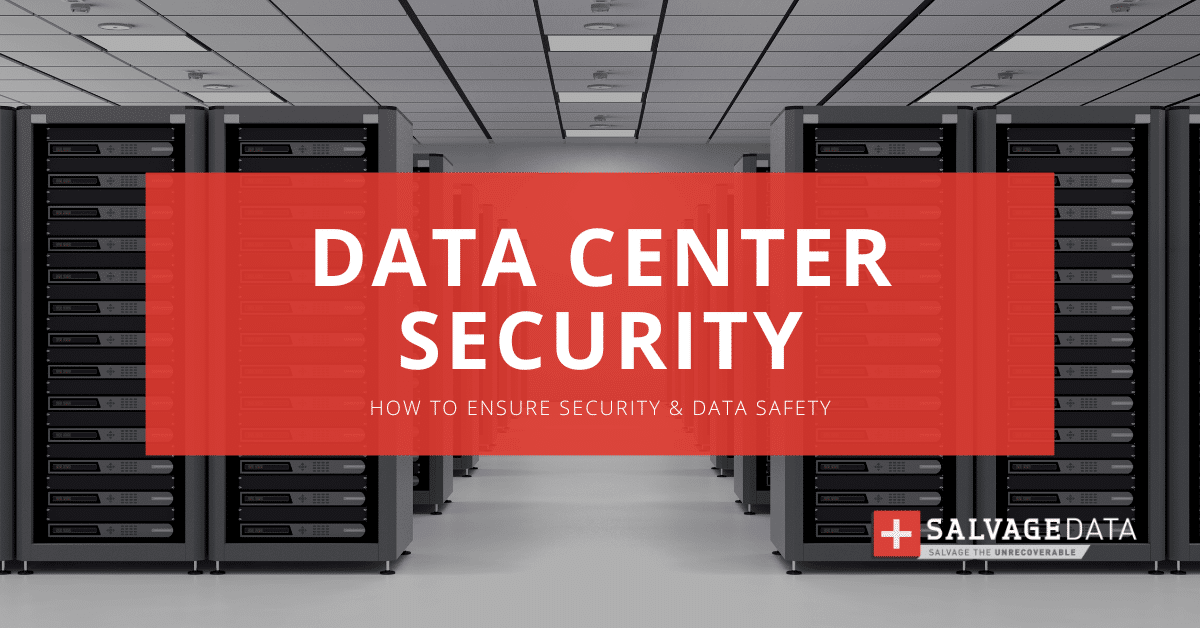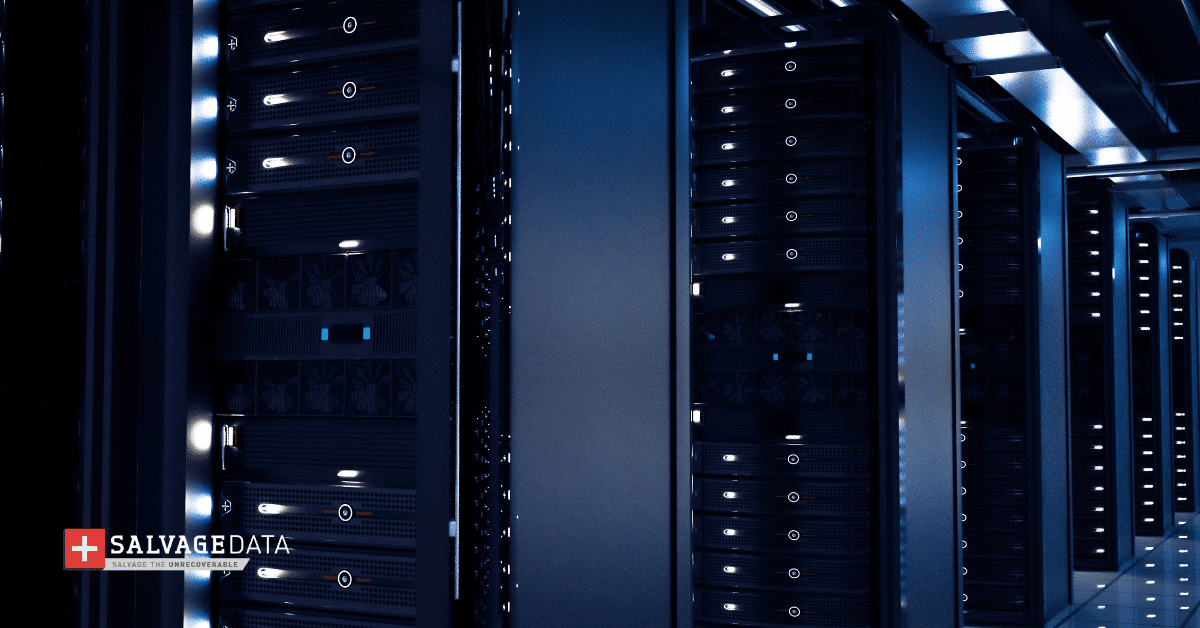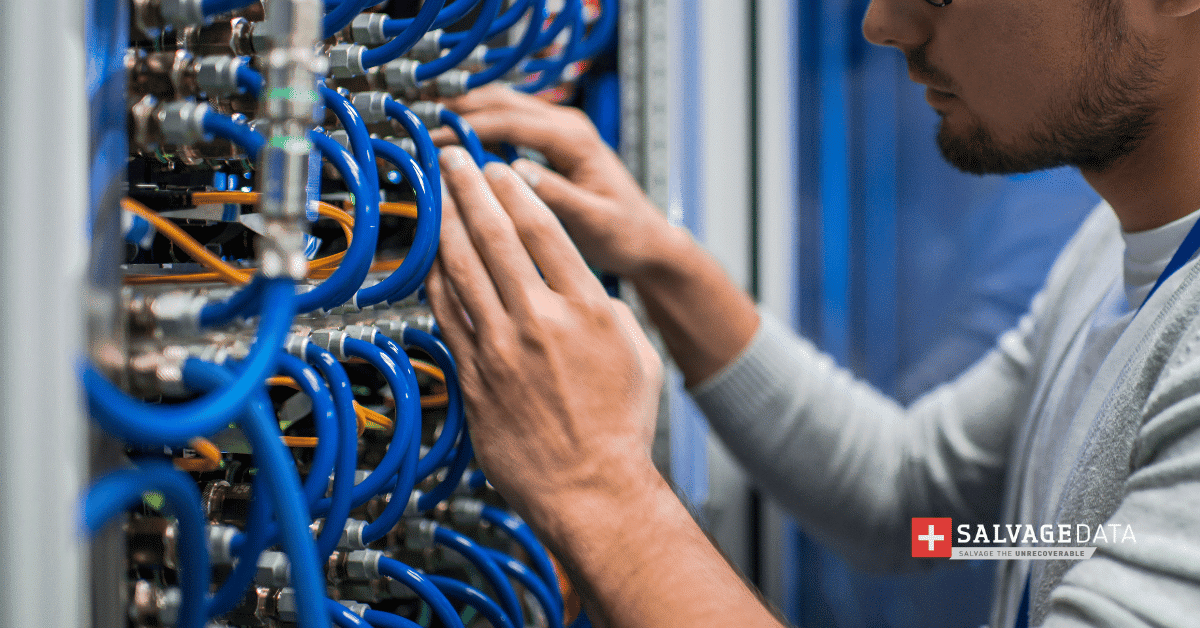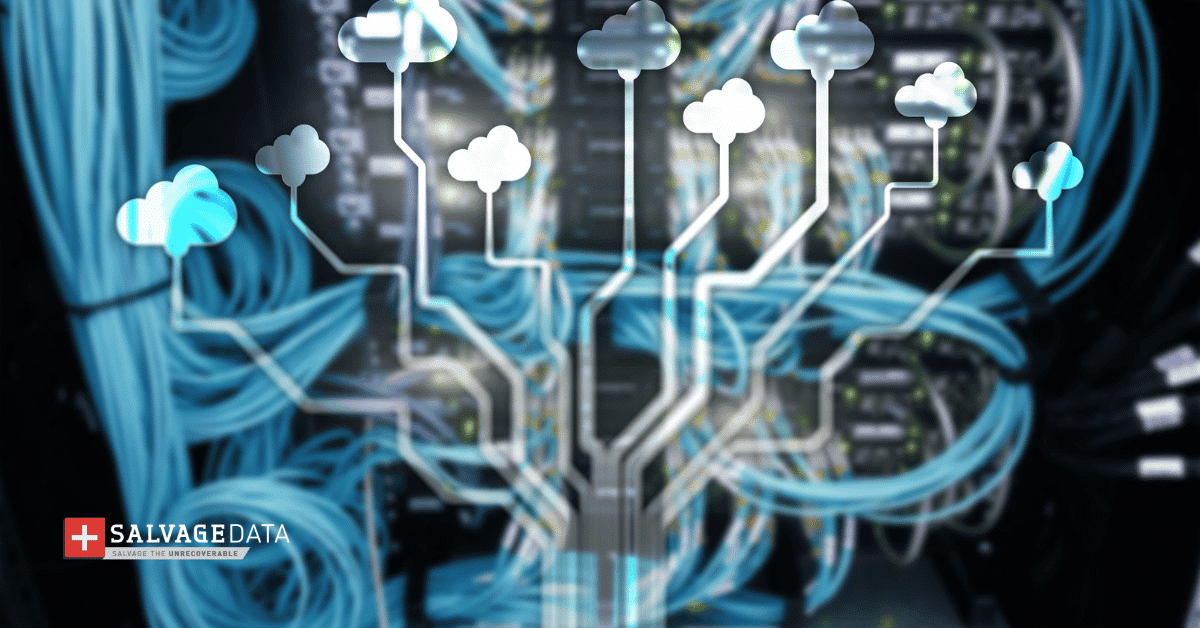Recent Articles
How To Recover Overwritten Files
The Snowflake Data Breach: A Comprehensive Overview
Mac Not Recognizing External Hard Drive: Quick Fix Solutions
How Multi-Cloud Backup Solutions Can Prevent Data Disasters
Capibara Ransomware: What is it & How to Remove
What Should a Company Do After a Data Breach: The Ticketmaster Incident
Secles Ransomware: Removal Guide
What To Do When Your Chromebook Freezes
How to Create Hyper-V Backup
What Is The Best Data Recovery Software For PC

I think there's an issue with my storage device, but I'm not sure Start a free evaluation →
I need help getting my data back right now Call now (800) 972-3282
Data center security refers to the measures and protocols in place to protect sensitive information and critical infrastructure housed within a data center.
This includes physical security measures, such as security cameras, access control systems, and security personnel to prevent unauthorized physical access.
It also includes cybersecurity measures, such as firewalls, intrusion detection and prevention systems, antivirus and antimalware software, and encryption. Measures to protect against cyberattacks and data breaches.
Regular security audits and testing are typically conducted to identify and address any vulnerabilities or weaknesses in the security infrastructure.
Data center security helps to ensure the integrity, confidentiality, and availability of the data and systems housed within the facility. And it can also protect organizations from costly data breaches, downtime, and reputational damage.
Difference between physical and virtual data center
The main difference between a physical data center and a virtual data center is that a physical data center is a tangible, on-premises facility that contains physical IT infrastructure. Meanwhile, a virtual data center is an abstract, cloud-based service that offers a virtualized IT infrastructure.
In a physical data center, servers and other IT equipment are housed on-site and managed by an organization’s IT staff. It requires dedicated space, a power supply, and a cooling system. As well as physical security measures to ensure the protection of the hardware and data stored within.
In contrast, a virtual data center is hosted and managed by a third-party cloud provider, offering Infrastructure as a Service (IaaS) to the organization. It’s possible to manage and deploy virtual machines, storage, and networking through a virtual interface. As a result, organizations can benefit from a more flexible and cost-effective IT infrastructure. All this without having to maintain the hardware or invest in on-premises data center space.
Both physical and virtual data centers require robust security measures to safeguard data and IT infrastructure against cyber threats and data breaches.
Who needs data center security solutions
Any business and organization that houses sensitive data or critical IT infrastructure need data center security. This can include businesses of all sizes, government agencies, financial institutions, healthcare providers, and educational institutions, among others.
Data center security is particularly important for organizations that handle sensitive information such as personal identifying information (PII), financial data, or confidential business information, as well as those that rely heavily on their IT infrastructure to operate their core business functions.
Common data center security measures
Even though you can find virtual and physical data centers, some security measures must be applied for both technologies.
You may protect your data center using security protocols like:
- Intrusion Prevention Systems (IPS). IPS will detect and prevent network-based exploits against vulnerable systems.
- Zero-trust Network Access (ZTNA). ZTNA is a secure way to connect endpoints and other users, regardless of the device, to any corporate application.
- Web Security. Installing a web application firewall (WAF) and its modern cloud counterpart web application and API protection (WAAP) allows you to inspect traffic to and from web applications.
Physical data center security measures
Physical data center security solutions refer to the physical safeguards put in place to protect the physical IT infrastructure and sensitive data housed within a data center. The measures you apply to protect your data center will depend on its size.
On-premise data centers must have security measures that understand the location and the physical threats to it. It includes natural disasters such as earthquakes and floods. Also, the data center room must have controlled air to keep it cool and you must ensure that it’s as dust-free as possible.
Other security measures for on-premise data center security are:
-
- Access control systems. These include biometric scanners, key cards, or other secure identification methods to ensure that only authorized personnel can enter the data center.
- Security personnel. Trained security personnel can monitor and enforce physical security protocols, such as verifying the identity of visitors and monitoring surveillance cameras.
- Video surveillance. Installing security cameras in and around the facility to monitor activity and deter unauthorized access.
- Perimeter fencing. Fencing around the data center can provide an additional layer of protection to prevent unauthorized access.
- Fire suppression systems. You can use fire suppression systems to prevent or minimize damage due to fires.
- Environmental controls. This includes HVAC systems, temperature and humidity sensors, and backup power generators. These can help ensure that the data center is always operational and that equipment is not damaged due to environmental factors.
- Power supply. Install a power generator to supply energy to the data center and the air controller system. In case of power outages, an emergency power supply system will give you enough time to properly shut down the network.
Virtual data center security measures
Virtual data center security solutions refer to the virtual safeguards put in place to protect the virtual IT infrastructure and sensitive data housed within a cloud-based virtual data center.
Many data centers use data virtualization now, which has several advantages, including remote management and instant service provision across different servers.
To ensure virtual data center security you must take the following measures:
- Data encryption. Encryption of data at the transit and rest levels helps to ensure that data is secure both in transit and while stored on servers.
- Identity and access management. To ensure that only authorized users can access the virtual data center resources, you must apply role-based access control (RBAC) and multi-factor authentication (MFA).
- Network security. To protect virtual machines and networks from cyber-attacks, virtual data centers apply network isolation tools, such as VLANs, and firewalls.
- Automated security tools. Tools like intrusion detection and prevention (IDS/IPS), antivirus, and security information and event management (SIEM) systems are deployed to detect and combat threats.
- Regular security testing. Regular security tests are conducted to identify vulnerabilities in the virtual infrastructure and correct them.
- Disaster recovery and business continuity planning. Failover and disaster recovery measures are put in place to ensure business continuity in the event of an outage or disaster.

How to protect your data center from ransomware attacks
Data center security is crucial for business operations. To prevent ransomware and other cyber attacks on your data center you must follow the security measures mentioned already and apply a few more solutions that can protect the data as well.
- Regularly update and patch software. Ransomware often exploits vulnerabilities in software to gain access to systems. Ensuring all software is up to date and patched can reduce the chances of successful attacks.
- Deploy firewalls and intrusion detection/prevention systems. You can use these to monitor suspicious activity and prevent malicious traffic from entering the network.
- Use antivirus and anti-malware software. Regularly scan systems for malware and viruses and remove them if find anything.
- Implement data backup and recovery procedures. Regularly back up critical data to offline or offsite storage to ensure that data can be recovered in the event of an attack.
- Educate employees about ransomware. Training employees on how to identify and prevent ransomware attacks can help shield them from falling prey to phishing scams and other social engineering tactics used by attackers.
- Implement access controls and strong authentication. Strong authentication protocols and access controls can help prevent attackers from accessing systems and data.
- Test incident response plans. Regular testing and updating of incident response plans can help ensure a quick and effective response to an attack.

If you need help building your incident recovery plan or removing and recovering data after a ransomware attack, contact SalvageData experts for emergency recovery.













